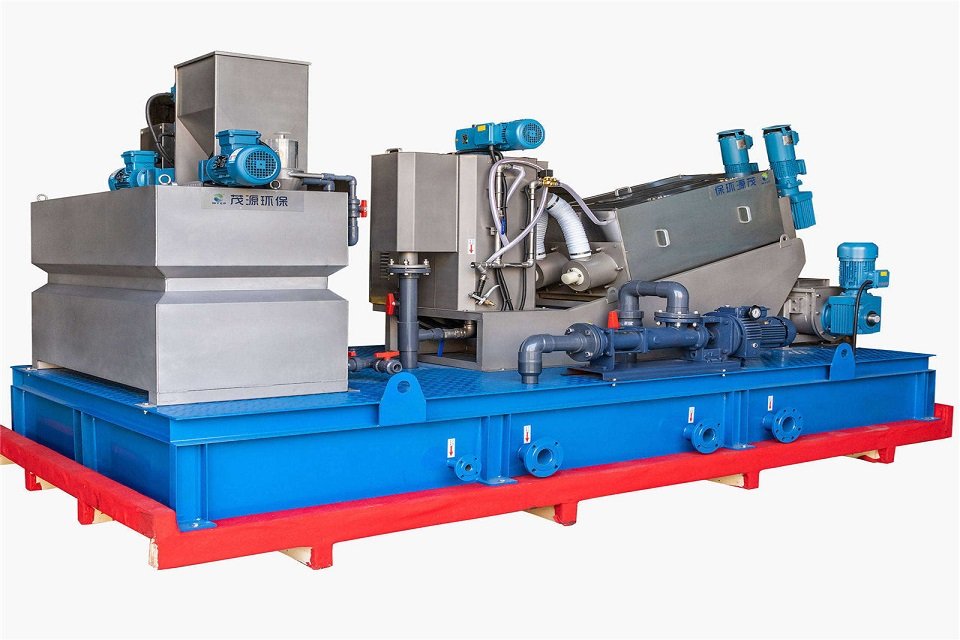
Food, Beverage & Packaging – Sludge Dewatering System
Food, beverage, and packaging industries are among the leading producers of biological waste. This poses many risks to the environment and its inhabitants, both plants and animals. This is why laws exist to ensure that such water is disposed of properly.
One of the methods that the companies mentioned above follow the law is investing in wastewater filtration systems. These ensure that the contaminated water undergoes treatment before being discharged into sewers.
What is a Wastewater Filtration System?
As the name suggests, wastewater filtration systems remove impurities and other undesirable components in a liquid stream.
Biological wastewater filtration systems purify sewage. They use living organisms to remove the contaminants. These microbes work by digesting the organic matter present in the wastewater, after which they die. The three subtypes of biological wastewater treatment systems are:
- Aerobic systems: these use microbes that need oxygen to purify wastewater. For this reason, they require adequate aeration and regular sludge removal to function optimally.
- Anaerobic systems: these use microorganisms that don’t need oxygen. This makes them ideal for treating concentrated waste streams. However, they tend to be less effective when exposed to oxygen. Fluctuations in pH levels and temperature also affect their operation.
- Anoxic systems: these use microbes that substitute oxygen for oxidised inorganic compounds during respiration to remove nitrogen and other impurities.
Depending on the amount of wastewater, more than one biological treatment method might be used.
Food processing plants also use chemicals to treat wastewater. The most popular options include:
- Bioaugmentation chemicals: these work by using the organic matter in the waste stream to produce biogas. This can be reduced for energy production or sold to external consumers.
- Anti-foaming chemicals: these prevent the formation of foam and water overflow. They are primarily used in biological reactors and floatation processes.
- Coagulants and flocculants: these are used in several stages. They include floatation, separation, and sludge dewatering. They aim to ensure that you discharge as little water as possible.
It’s advisable to invest in digital equipment to optimise your wastewater filtration process. Consider linking your system to a control panel, digital monitoring systems, and sensors. This way, you’ll always be guaranteed that wastewater from your plant doesn’t pose any risks to the environment. Digitisation also helps you improve system performance. You can notice issues and correct them before they become unmanageable.

Sludge Dewatering
After passing through the biological and chemical filtration processes, most of the contaminants that remain in the water stream are solid. The mixture of these solids and water is called sludge.
Sludge dewatering is a process that aims to separate the solids from the water to produce a cake-like substance. It involves the passing of the sludge through a vacuum generator that has a high force that suctions the water.
The essence of dewatering is to simplify the disposal process. Once the water is separated from the solid, it can be discharged into sewers or reused. On its part, the solid can be incinerated, dumped into a landfill, or used for making fertiliser.
If the solid is still watery, it’s challenging to burn it effectively. More fuel will be required to evaporate the fluid. Furthermore, the fluid is likely to produce unpleasant odours as it evaporates.
Suppose you choose to transport it to a fertiliser factory; the moist solid will be bulky and occupy a larger space than if it were dry. This often translates into higher transportation costs.
Lastly, moist solid waste creates an ideal breeding ground for bacteria and other pathogens if disposed of in a landfill. Even worse, it causes air pollution when it starts rotting.
The best way to avoid such issues is by investing in a sludge dewatering system. Its upfront cost might be high, but it’s cost-effective in the long run. More importantly, it helps in environmental conservation. It also reduces the risk of contracting diseases caused by careless waste disposal.




